1. Introduction
1.1 Overview of Management
Management is about achieving results through people. General management skills allow the project manager to lead the team with some level of efficiency and effectiveness. Projects involve risks, operational benefits, human resource management and accounting work. Given the similarities between project management and general management, understanding the fundamentals of general management is an important place to begin the study of project leadership.
Depending on the nature of the organization and the industry in which it operates, managerial responsibilities can vary widely. As seen in Exhibit 1.1, these responsibilities are best viewed by considering the three major types of roles managers play within organizations: 1) informational, 2) interpersonal, and 3) decisional roles.
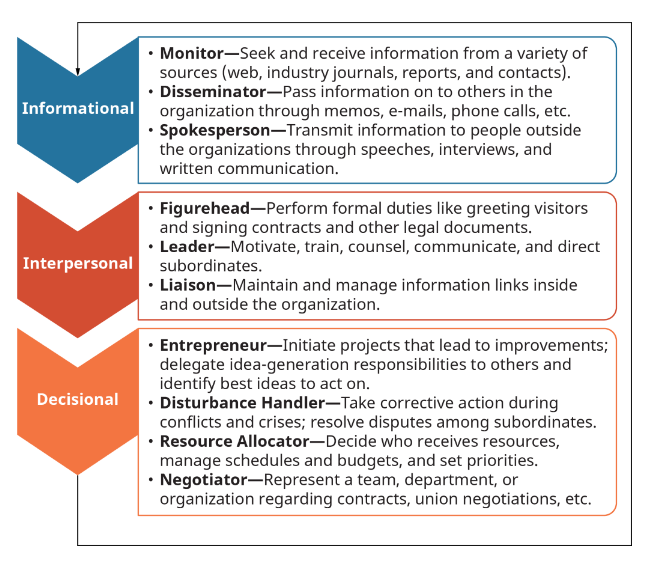
Exhibit 1.1: The roles managers play (accessible version)
Rice University, OpenStax
The extent of each of these roles depends on the manager’s position within the organizational hierarchy. As shown in Exhibit 1.2, different skills (conceptual, human, and technical) are required for different levels of the managerial hierarchy. Success in executive positions requires far more conceptual skills and less use of technical skills in most (but not all) situations. In contrast, first-line managers generally require more technical skills and fewer conceptual skills. Lastly, middle managers may require to be well-rounded in all three skills. Note, however, that human relations skills, or “people skills,” remain important for success at all three levels in the hierarchy.

Exhibit 1.2: Difference in skills required for successful
management according to level in the hierarchy
Rice University, OpenStax
In addition, the extent of the roles also varies by department and function. Significant differences can be found in accounting, human resources, manufacturing, and sales, just to name a few. A key differentiator is the emphasis of each role. For instance, managers in the accounting function spend little time, if any, resolving customer service issues. However, managers in the sales, marketing, and service functions spend a considerable amount of their time ensuring those issues are effectively and efficiently resolved.
Depending on the maturity of the organization, project/program managers may find themselves taking on many of the attributes of the informational, interpersonal and decisional managers as it relates to the project(s) and program(s) they are accountable for. For instance, projects that involve external suppliers may see the project manager playing a liaison role with these supplies throughout the duration of the project.
Depending on the reporting relationships of the project managers and the project’s importance, the project/program manager may find themselves operating like an executive, middle or first line manager in the organization.
A lot has changed in the field of management. 21st-century managers differ from their predecessors in four key ways. They have become global strategists, masters of technology, good internal/external advocates, and premier leaders-motivators.
The focus in this text is on the role of the project, program, and/or portfolio manager. The unique emphasis of these roles naturally leads to a discussion of what a project, program, and/or portfolio are and why a focused emphasis on leading change is required. In addition, we will look at the unique technical and “human” skills that successful project management professionals must possess.
1.2 What is a Project?
A project is a temporary endeavour undertaken to create a unique product, service, or result.1
Organizations often choose to manage a related group of projects in a coordinated way to obtain benefits and control unachievable by managing projects individually. When this occurs, it is known as program management.1
As an organization grows and matures, change becomes necessary to its sustained viability. Understanding the drivers of a change is the first step in understanding how the project should be managed. Some changes are mandatory. This is often the case with changing legislation and regulations. Mandatory changes often have compliance deadlines and penalties for non-compliance. Operational changes seek to address deficiencies in the day-to-day operations of an organization and can involve repairing or replacing equipment and facilities. Lastly, strategic changes are optional but once pursued, help take the organization to the next level of performance in the marketplace.
Regardless of the underlying driver(s) for a project, all projects have unique objectives. These unique objectives lead to specific and measurable time, as well as cost and performance requirements. Projects end when their objectives have been met, as well as when they are no longer desirable and/or achievable. In contrast, operational work is not temporary. Operational activities are ongoing and are performed to sustain the organization. The daily processing of sales transactions is a good example of an operational activity. In contrast, replacing the system that processes daily sales transactions is a project.
Given the temporary nature of a project, it is helpful to visualize the natural flow of a project from start to finish. We refer to this as the project’s lifecycle. All projects have a beginning (“Initiation”), involve some degree of planning (“Planning), design/development/deployment of one or more solutions (“Executing”) and come to and end (“Closing”).
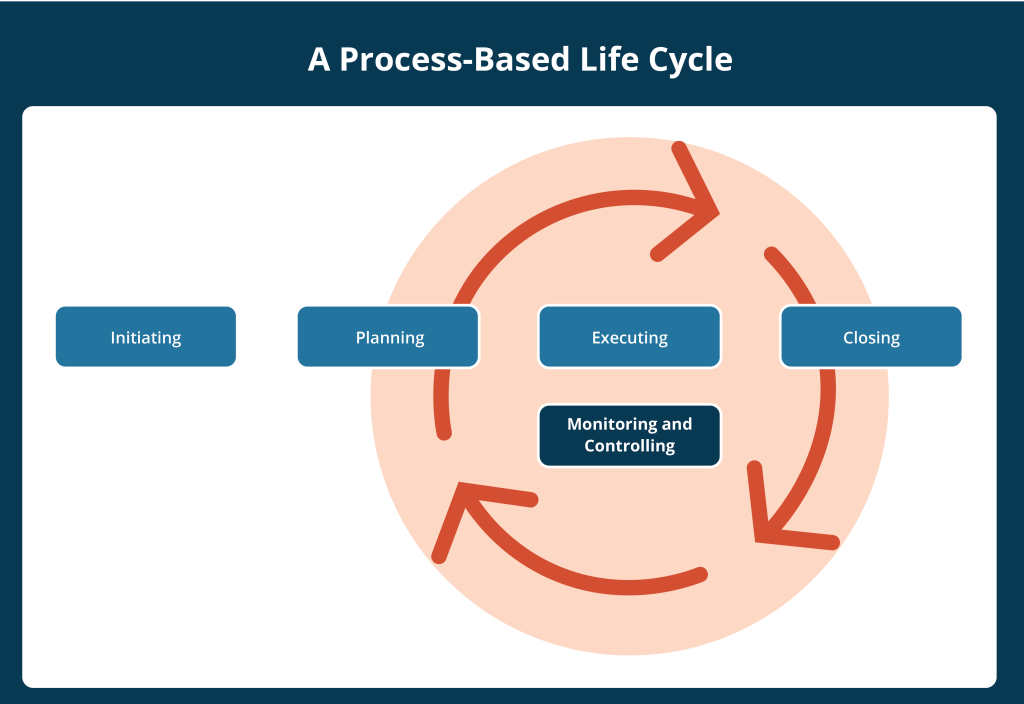
Exhibit 1.3: A Process-Based Life Cycle
Adapted from Project Management Institute, Standard for Project Management, 2021 (PMBOK® Guide 7E)
1.3 How is Project Management a Unique Discipline?
Disruption is the new normal. Globally, organizations are operating in an environment that is becoming increasingly complex. Geopolitical tensions continue to threaten global supply chains. The impact of the COVID-19 pandemic has been profound and prolonged. Organizations are only beginning to explore the transformative power of generative artificial intelligence. Governments and organizations are expected to demonstrate a deeper commitment to social accountability.
Organizations need highly collaborative people with customer-centric mindsets that can bring together cross-functional teams of people and identify innovative ways of responding to these forces of change. In addition, organizations value people with the skills to transform these innovative ideas into reality. These change makers are project management professionals.
Project management professionals find community in two major associations: the Project Management Institute (PMI), with world headquarters in the United States, and the International Project Management Association (IPMA), with world headquarters in Switzerland. This text follows the approach taken by PMI and will remain aligned with PMI as practices evolve.
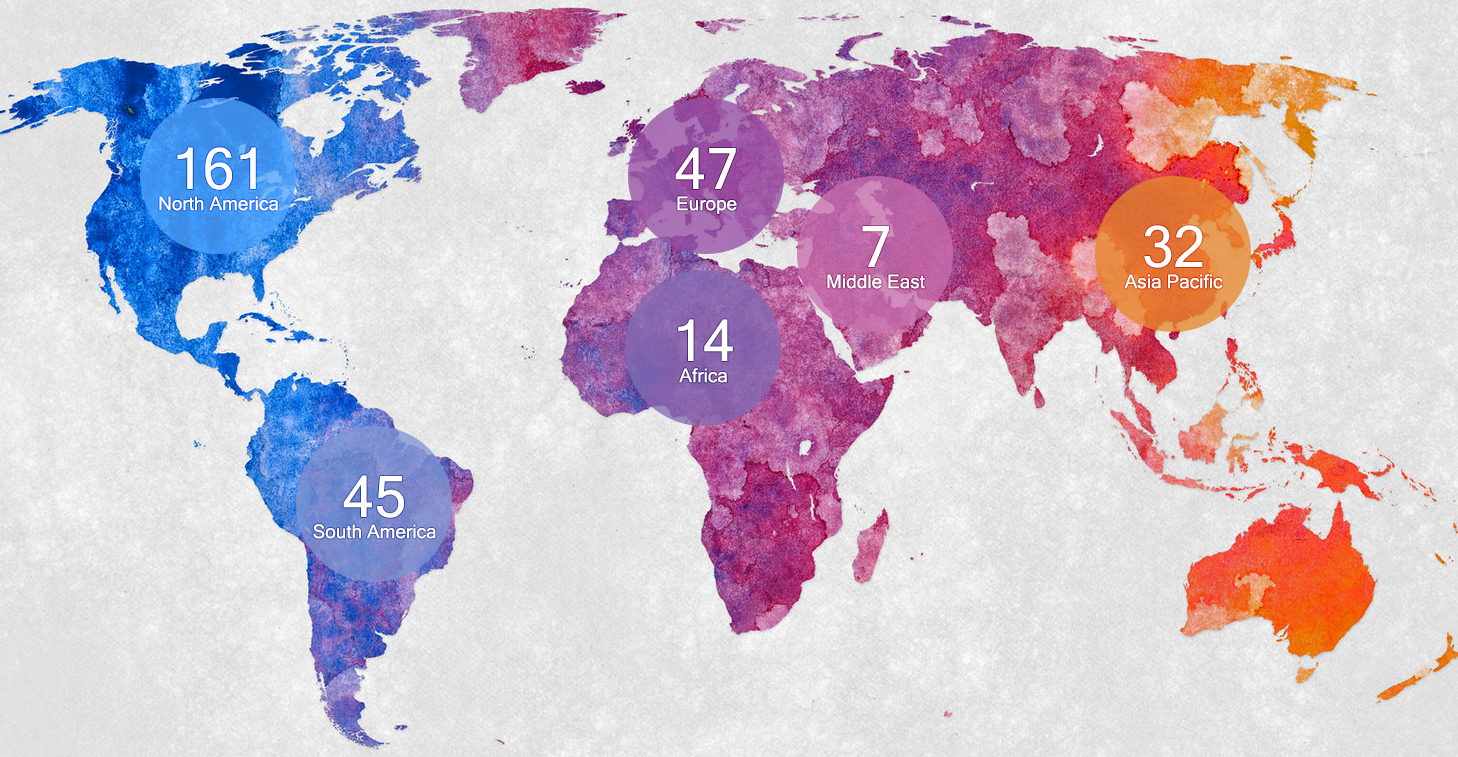 Exhibit 1.4: PMI is a global organization consisting of over 300 local chapters
Exhibit 1.4: PMI is a global organization consisting of over 300 local chapters
Map template: Nicolas Raymond, Flickr
PMI is a non-profit project management professional association. It is the most widely recognized association for those who consider project, program, or portfolio management as their profession. Founded in 1969, PMI works in nearly every country around the world to advance careers, improve organizational success, and further the project management profession through globally recognized standards, certifications, communities, resources, tools, academic research, publications, professional development courses, and networking opportunities. With a membership of more than three million people, it has proven its ability to help organizations deliver successful change initiatives.
According to PMI, “project management is the practice of using knowledge, skills, tools and techniques to complete a series of tasks to deliver value and achieve a desired outcome”. 1 Project leaders are evaluated on how effectively they apply their project management knowledge, skills, tools, and techniques to a change in a functional area(s) and how effectively they prepare the functional area(s) to sustain the change. They ask themselves questions such as, “Will this change add value to the organization?” As a team, they may ask, “Will we deliver solutions when they are needed, within the funding parameters available in the organization, and will we meet the expectations of the end–user community?” They also frequently ask, “Are the stakeholders, including the impacted functional leaders, still supportive of the changes to be delivered?” Answers to these questions guide the project team’s work.
PMI’s 2020 Pulse of the Profession2 revealed that in organizations with mature project delivery practices, an average of 11 percent of the investments made in change was wasted due to poor project performance. Further, organizations that undervalue project management as a strategic competency for driving change report an average of 67 percent more of their projects failing outright.2 On a global scale, this translates into billions of dollars wasted. In these turbulent times, failures of this magnitude can lead to disastrous outcomes for organizations already struggling to survive. For those that do survive their failed change attempts, many find themselves forced to reimagine what they do and how they do it.
This new decade has introduced us to the “Project Economy.”2 Organizations are constantly searching for ways to adapt and thrive. This means high-stakes projects are frequently launched with a variety of titles, executed through a variety of approaches, and are focused on delivering financial and societal value.
In the Project Economy, change is introduced rapidly, and some organizations call upon their functional managers to deliver low complexity change into their environments. These functional managers are often successful in leading these change initiatives when they have the needed skills and capacity to apply the appropriate project management tools and techniques while overseeing the daily operational activities of their teams.
However, if a functional manager lacks the skills required to manage a project or finds themselves frequently putting out fires started by product/service performance issues, unreliable suppliers, aggressive competitors, and/or ongoing human resource issues, a project management professional is often asked to lead the change. Furthermore, when the change requires cross-functional teams to understand the needs of the end customer and deeply explore these needs before building a solution, project management professionals are better suited for these types of change initiatives.
1.4 The Project Manager and Project Team
The responsibility for executing the project belongs to the Project Manager. Having one person accountable for project success promotes greater accountability throughout the organization and clearly distinguishes the responsibilities of the individual in this role with the functional managers in the organization. This means that the Project Manager must deliver on the budget, schedule and solution performance requirements of the project. They are accountable for delivering the expected organizational value. The Project Manager is involved in the project throughout its duration. In some organizations, Project Managers are involved in the feasibility assessment of a potential change initiative. In these cases, they often provide high level estimates for project costs, identify potential risks and provide insight into the complexity of the solution(s) being contemplated. Once the change initiative is approved, a Project Sponsor is then appointed. The Project Sponsor Working closely with the Project Sponsor, the Project Manager will form their team and strive to provide motivation and purpose throughout the project’s duration. A big part of their day to day activities involves communication and integration. Team members will be assigned to lead various components of the project and the Project Manager will ensure their work meets stakeholder expectations and is integrated into the broader project solution.
Project management is extremely rewarding and it comes with it’s own set of challenges. One of the biggest challenges is motivating a team of people who are “on loan” to you for the duration of the project. Learning to lead through influence is a key challenge for the Project Manager. It often starts with negotiating with functional leaders to obtain people with the needed skills and capacity for the project.
The project team is comprised of subject matter experts who have specialized knowledge and skills about a particular subject, function, product or service. One key role on the project team is the Business Analyst (BA). A business analyst helps ensure that the business needs are accurately and appropriately satisfied with the project outcomes. Business analysis is the process of identifying what is needed and recommending viable solutions to satisfy business needs. Activities include documenting requirements and validating that those requirements are satisfied by the project outcomes. Business Analysts often work with process engineers, human resource professionals and technologists to explore the people, process and technology aspects of a solution.
Successful project leaders of the 21st century truly understand that their people skills are just as valuable as their technical skills. PMI’s research on the skills most valued by employers has led to the creation of the Talent Triangle.
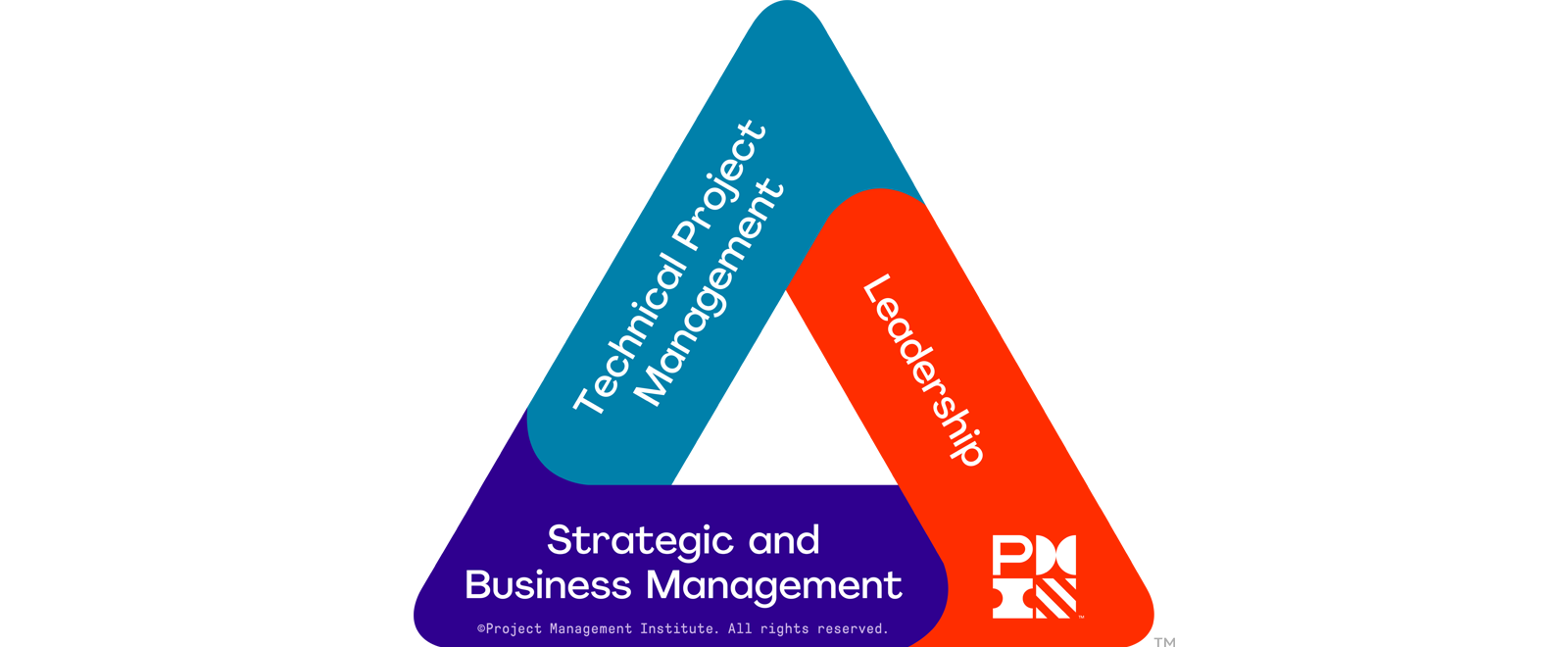
Exhibit 1.5: PMI’s Talent Triangle. The three points of the triangle (which represents the ideal triad of skills) are technical project management, strategic and business management, and leadership.
PMI
Additional reading:
Technical project management skills:
Technical project management skills are about successfully tailoring the tools, techniques and processes used. This domain also includes the ability to thoroughly plan, prioritize and effectively manage the scope, schedule, budget, resources and risks associated with a project.
This text explores the technical management skills that are required for project management. The required knowledge varies by process group, and this will be highlighted as we explore how projects are initiated, planned, executed, monitored, and ultimately closed.
Strategic and business management skills:
Strategic and business management skills are about communicating a project’s organizational aspects, develop delivery strategies and maximize business value. It is also important for project managers to understand the project environment. In Chapter 3, we will look at the internal environment and the impact project structures and organizational culture have on project success. It is also important to example the external factors that influence an organization. Project managers can examine the political, economic, social, technological, legal and environmental factors (the PESTLE framework) that influence an organization.
Some projects require specific organizational and/or industry knowledge. This knowledge can be defined by industry group (pharmaceutical, financial, etc.), department (accounting, marketing, legal, etc.), technology (software development, engineering, etc.), or management specialty (procurement, research and development, etc.). These application areas are usually concerned with disciplines, regulations, and the specific needs of the project, the customer, or the industry.
It is important for project leaders to embrace a life-long learning mindset as internal and external environments often change very quickly. During the first phase of a project’s life cycle, known as the “initiation phase,” project leaders assess the strategic and business management knowledge they have and its value to the new project underway. If necessary, effective project leaders seek to close their knowledge gaps through their own research and by seeking the support of mentors.
Lastly, it is important for project leaders to understand the organization’s vision, mission, and strategies. The importance of this will be discussed in Section 2.1.
Leadership skills:
Leadership is about using one’s interpersonal skills in order to guide, motivate and direct a team toward the achievement of expected results. Effective leaders need the following skills and attributes:3
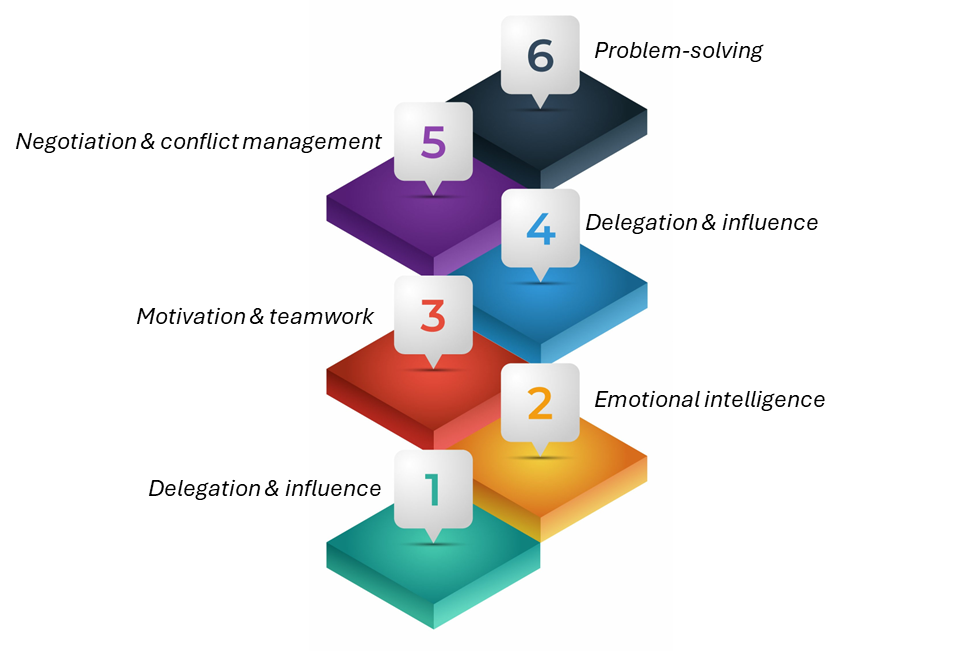 Exhibit 1.6: 6 essential leadership skills for Project Managers.
Exhibit 1.6: 6 essential leadership skills for Project Managers.
1. Delegation and influence
Delegating responsibility and work to others is a critical project management skill. Letting go of the work is often not easy – it may be difficult to give up control and the project manager may actually enjoy doing the work themselves. However, the project manager must give others the autonomy, accountability, and responsibility for project work. Delegation involves understanding the knowledge, skills, and abilities needed to manage the work and matching the team members with the right skills to do it.
Finding the right balance between delegating too much and too little authority is critical and requires practice. If a project manager delegates too little authority to others to make decisions and act, timely decisions will not be made and this can impede the project’s progress. Delegating too much authority to others who do not have the knowledge, skills, or information can result in costly mistakes that also impede the project’s progress.
Influence is the ability to get people to do things for you when you don’t have the positional power to delegate work or provide directives about the desired outcomes. Project managers that have significant influence can likely attribute this to the effective application of the other essential leadership skills – emotional intelligence would be a good example.
2. Emotional intelligence
Emotions are mental and physiological responses to external and internal stimuli. Leaders should understand and value emotions to appropriately respond to the client, project team, and project environment. Emotional intelligence includes the following:
- Self-awareness: recognizing your emotions and how they affect you and your interactions with others
- Self-regulation: managing emotional responses in your interactions with others
- Empathy: recognizing the emotions held by others
- Relationship management: managing emotions in relationships for more effective interactions
Emotions are essential to generating energy around a concept, building commitment to goals, and developing high-performing teams. Emotional intelligence is vital to the project manager’s ability to build trust among the team members and stakeholders. It is necessary to establish credibility and open dialogue with project stakeholders. The more complex a project, the more influential the project manager’s emotional intelligence becomes to project success.
3. Motivation & Teamwork
Motivation is a force that drives people to perform at their best. A motivated team is essential in the development of a high performing team. Effective project managers motivate their team toward the achievement of project goals. When motivated teams encounter obstacles, they are more likely to successfully overcome them than the unmotivated team. The project manager uses various team-building techniques and exercises to motivate the team. Team building is getting a diverse group to work together most efficiently and effectively. This may involve management events and individual actions designed to improve team performance.
Recognition and rewards are an essential part of motivating teams and are formal ways of recognizing and promoting desirable behavior. These strategies are most effective when carried out by the functional management team and project manager. Consider individual preferences and cultural differences when using rewards and recognition. Some people don’t like to be recognized in front of a group; others thrive on it.
4. Communication
Project managers spend the majority of their time communicating. Therefore they must be good two-way communicators, promoting a clear, unambiguous exchange of information. As a project manager, you must keep many people well informed. It is essential that your project staff know what is expected of them: what they have to do, when they have to do it, and what budget, time constraints, and quality specifications they are working toward. If project staff members do not know their tasks or how to accomplish them, the entire project will grind to a halt. If you do not know what the project team is (or is not) doing, you will be unable to monitor project progress. Finally, if you are uncertain of what the customer expects of you, the project will not be successful. Project communication can be summarized as knowing “who needs what information and when” and ensuring they have it.
One of the most useful communication skills a project manager has is the ability to listen actively. Active listening is placing oneself in the speaker’s position as much as possible, understanding the communication from the speaker’s point of view, observing body language and other environmental cues, and striving not just to hear but to understand. Active listening takes focus and practice to become good at it. It enables a project manager to go beyond the basic information being shared and develop a complete contextual understanding of the information. Active listening techniques include:
- Listening intently to the speaker’s words and discerning their body language
- Nodding and expressing interest in the speaker without forming rebuttals
- Providing feedback and asking for clarity while repeating a summary of the information back to the speaker
- Expressing understanding and empathy for the speaker
5. Negotiation and Conflict Management
Project managers must negotiate for the good of the project. This often requires the project manager to set aside their own personal interests in favour of the betterment of the team and the project. Negotiation with internal and external stakeholders is a regular part of a project manager’s role and it is an active process where you try to get an agreement between the people involved. Negotiation is necessary when stakeholders disagree on what is to be included or excluded in a project, a decision that needs to be made and the preferred approach to a given situation. Facilitation skills are very helpful in achieving agreement.
Conflict in a project is to be expected because of stress levels, lack of information during the early phases of the project, personal style differences, role conflicts, and limited resources. Although good planning, communication, and team building can reduce conflict, issues will still emerge. How the project manager deals with conflict results in either deeper problems or an opportunity to build energy, creativity, and innovation.
6. Problem-Solving
Problem-solving is the ability to understand the root of a problem, identify viable solutions, and then decide to implement the best solution. The starting point for problem-solving is defining the problem. Problem definition involves evaluating the cause and effect of the problem; this centers on root-cause analysis. If a project manager treats only the symptoms of a problem rather than its cause, then the symptoms will continue through the project’s life. Even worse, treating a symptom may result in a more significant problem. For example, continuing to ship new orders to customers with late deliveries does not address the underlying problem of why the orders were late in the first place. In fact, shipping more of the same product will only compound the delivery issues. Root cause analysis looks beyond immediate symptoms to the cause of the symptoms, which then affords opportunities for solutions. Once a project manager identifies the root of a problem, they must take action to resolve it.
Solutions can be presented by vendors, the project team, the project manager, or various stakeholders. In addition, a timely decision is needed, or the window of opportunity may pass, and a new decision will be required to address the problem. As in most cases, the worst thing you can do is nothing.
This is by no means a complete list of all the skills and attributes required to be a successful project leader. Moreover, the nature and complexity of a project can help identify which of these skills will be more instrumental to project success than others. PMI is committed to helping project management professionals develop their skills in all the key areas. One of the ways this is done is by encouraging certification. There are many certification opportunities, including the PMP (Project Management Professional) and the CAPM (Certified Associate in Project Management). Once certified, project management professionals have access to a wealth of ongoing professional development resources aligned to all areas of the Talent Triangle.
Additional reading:
Successful project leaders know how to uniquely apply the knowledge and skills they have learned to each project by tailoring the tools and techniques they use. The complexity of a project has a big impact on the tools and techniques required throughout the project lifecycle. Familiarity with PMI’s Project Management Framework is also very important.
1.4 The Project Management Framework
In the 7th edition of The Standard for Project Management Body by the PMI, a new value delivery framework is presented. It includes 12 project management principles and 8 project performance domains. Together, these principles and performance domains offer guidance on how to introduce change effectively, efficiently and sustainably in any industry. The project management profession recognizes that there isn’t a single “recipe” for enhancing the value delivered to an organization’s stakeholders. Rigid “how to” procedures no longer work for all change initiatives. Project Managers need an adaptable and flexible approach and that is the primary objective of the new value delivery framework.
Project Management Principles
Successful Project Managers lead change initiatives ethically and in alignment with an organization’s vision, mission and values. The 12 project management principles act as universal guidelines for project teams aiming to successfully introduce sustainable change.
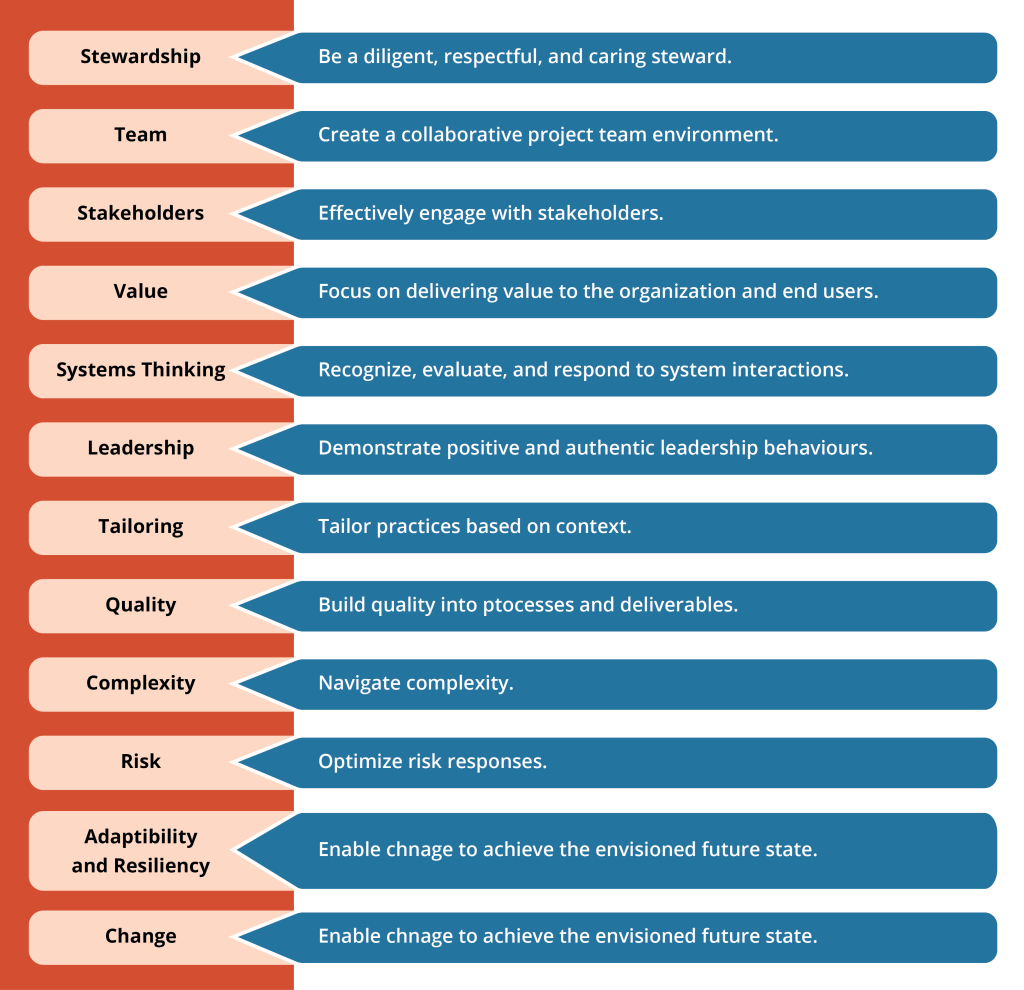
Project Performance Domains
These domains describe the work associated with value delivery. The activities described in these domains can take place at any point throughout the project.
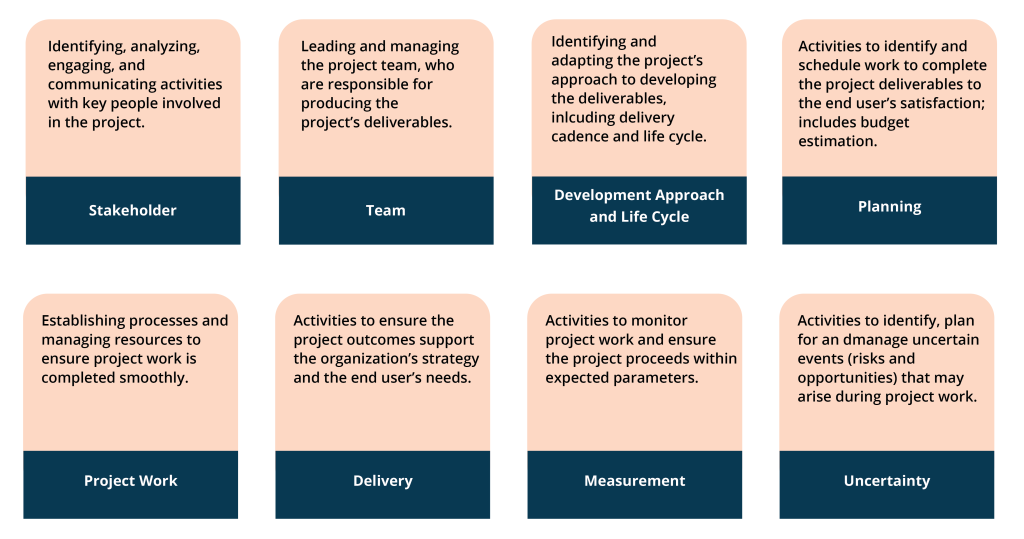
The selection of activities is determined by the organizational context, the project, the project team, stakeholder needs, and other relevant factors.
1.5 Digitization of Project Management
The Digital Age
We live in an era characterized by accelerating exponential change driven by a cluster of technologies, such as the internet, social media, mobile, big data/analytics, artificial intelligence, automation, and robotics. Beginning with the introduction of the very first personal computer in the seventies, today, with an Internet connection, one can use video and audio to communicate and transact anytime, anywhere, and anyplace. We live in a digital realm in what is loosely described as “cyberspace,” in which information is exchanged and shared in a space that is virtual. Though these digital technologies have been developing for many years, it is only in the past decade or so that their cumulative impacts have become so deep-rooted, extensive, fast-changing, and profoundly impactful as to herald the dawn of a new age – the “Digital Age” or the Digital Economy. The cluster of technologies driving this is varyingly referred to as digital technologies or digital forces.
The role of digital technologies will continue to expand. This will occur because more devices are accessing the Internet; an ever-increasing number of people are using digital services and more value chains are being digitally connected. Therefore, access to digital technologies is a source of major competitive advantage for organizations, particularly when paired with the ability to use them to transform the way value is delivered to the market. In the education sector for instance, despite the challenges due to COVID-19, virtual learning environments have made it possible for academic institutions to continue seamlessly with their academic programmes.
The Organizational Response – Digitization, Digitalization, and Digital Transformation
The onset of the Digital Age and the availability of new technologies have been the enabling factor in organizational change and innovation. Organizations have been putting in place strategies and launching projects to become agile, profitable, and smart in order to cope with an increasingly competitive environment and the unpredictability of markets.
Given this, companies have been in a rush to become digital and they are going about it in different ways. Some of them are implementing digital technologies to engage in new ways with customers and others are completely transforming their way of doing business or creating an entirely new business model. To understand this, let us consider a simple process like performance reporting. Such reporting systems have moved from paper to spreadsheets to smart applications with digital technologies such as artificial intelligence (AI) and data analytics.
However, to reach the maturity of “smart reporting,” one would have to reimagine the way reporting is done in terms of the reporting formats, the periodicity, the flexibility in the use of variables, the application on which the reports are developed, and finally, the way the reports are presented. Such a move in reporting systems would also mean new ways in which we engage our customers who would be receiving, in real-time, such reports all laden with infographics.
To elaborate this further, historically, businesses kept handwritten or typed paper-based records. During this time, business data was in a stage which is referred to as analog, and if you wanted to move or share this data or information it was done through the physical movement of papers and documents.
When computers went mainstream, most businesses started converting all those paper records to digital computer files. This stage was called digitization, which is the process of converting information from analog to digital. Through the process of digitization, finding and sharing information became much easier, but the ways in which businesses used their new digital records largely imitated the old analog methods. Computer operating systems and thumbnails were even designed around icons of file folders to feel familiar and less intimidating to new users. Digital data was exponentially more efficient for businesses than analog had been, but business systems and processes were still largely using analog-era ideas about how to find, share, and use information.
Then organizations began the process of digitalization, which is the use of digital data to simplify the way work is done. A good example would be how call centres would use digitized data and information to provide customer service. Digitalization would enable call centres to provide better service by making customer records easily and quickly retrievable via multiple devices. The basic methodology of customer service did not change, but the process of fielding an inquiry, looking up the relevant data, and offering a resolution became much more efficient. In summary, digitalization is about the way business operations employ transformative digital technologies and information.
With digital technologies continuing to evolve and newer technologies becoming available, strategists have started generating ideas for using these digital technologies to improve existing ways of doing business, but more importantly, new ways of doing business. That is when the concept of digital transformation began to take shape. Organizations were now able to change their fundamental business models. Uber, for example, heavily incorporated digital transformation to change the way we rideshare.
Digital transformation is about changing the way business gets done and, in some cases, creating entirely new classes of businesses. With digital transformation, organizations are taking a step back and revisiting everything they do, from internal systems to online and in-person customer interactions. The questions being asked are, “Can we change our processes in a way that will enable better decision-making, increase efficiencies, enhance customer experience, empower personalization, and, most importantly, boost profits?”
Therefore, the organizational response to the capabilities provided by the Digital Age is to embark on a strategy of digital transformation of their businesses. Most organizations are integrating their digital strategy with their overall strategy to disrupt the marketplace.
Digital Transformation in the Educational Sector
Digital transformation has impacted every industry. The education industry is also realizing the benefits of technology through digital transformation and the rise of educational technology. The way instruction is delivered, the assessments, the physical make-up of the classrooms – all of these and more have undergone a transformation.
Educational technology is succeeding in making virtual learning collaborative and interactive. Augmented, virtual, and mixed reality are examples of transformative technology that enhance teacher instruction while simultaneously creating immersive lessons that are exciting and engaging for the student. Virtual reality has the capability of bringing the outside world into the classroom and the other way around. Chromebook sales now account for more than half of all devices sold for U.S. classrooms. The onboarding of technology has enabled the use of SMARTboards instead of chalkboards and pods of SMARTdesks instead of individual seating. The use of AI in higher education has already proven useful. In one university, IBM Watson was used to create a virtual student advisory service that was available 24-hours a day, seven days a week. Watson’s virtual advisors fielded more than 30,000 questions in the first trimester, freeing up the actual advisors to handle more advanced issues.
Another use for AI includes chatbots which have been deployed to clear queries around assignments, help students through a paperwork process, such as financial aid or paying bills, and ease the workload of the people who would normally serve these roles. Other applications of AI in education include personalizing learning, evaluating the quality of curriculum and content, and facilitating one-on-one tutoring with the use of Intelligent Tutoring Systems. Gaming technology is another area that makes learning difficult subject matter more exciting and interactive.4
Impact on Project Management
With a major percentage of organizations embarking on a strategy of digital transformation and disruption being the new norm, project leaders are becoming even more essential as organizations recognize that strategy is implemented through projects and programs.
So how exactly are the Digital Age and digital transformation changing project management? The impact is seen broadly at three levels in terms of skills, approaches to the delivery of projects, and the use of next-level tools and approaches that work. This creates both challenges and opportunities for project management and those who manage projects.
According to a recent PMI survey and subsequent study called, “The Project Manager of the Future – Developing Digital-Age Project Management Skills to Thrive in Disruptive Times,” project management will require organizations and individuals alike to embrace a full spectrum of competencies and approaches, along with a wide range of titles and methodologies.
From a skills and competencies perspective, project leaders will continue to need a thorough combination of technical and project management skills, leadership skills, and strategic and business management skills, which are already part of the PMI Talent Triangle introduced earlier in this chapter. In addition to this important triad of skills, organizations will need project leaders to learn and keep pace with existing and emerging technology. In the reality of the “Digital Age,” a new digital overlay has been given to the PMI Talent Triangle to emphasize how digital transformation is impacting every aspect of our work.
Success in today’s digital environment requires a combination of skills, some of which include data science (data management, analytics, big data), an innovative mindset, security and privacy knowledge, legal and regulatory compliance knowledge, the ability to make data-driven decisions, and collaborative leadership. The crux of it is that technical skills are not enough on their own and must be paired with leadership, as well as strategic and business management, in order to support the longer-term strategic objectives of organizations.
With regard to project delivery, organizations have been using a spectrum of approaches— predictive, iterative, incremental, agile, hybrid, and whatever approach will come next to change how work is carried out. Most organizations have embraced the entire value delivery landscape to deliver their projects and programs. Project leaders in organizations see disciplined agile delivery and design thinking as the growing approaches or processes that will be needed.
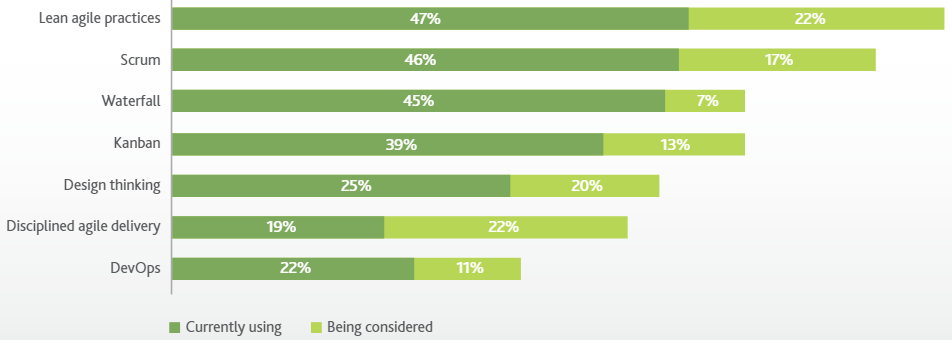
Exhibit 1.9: Approaches currently used or being considered by project leaders to manage disruptive technologies
PMI
The cluster of technologies available in the Digital Age is cutting-edge and disruptive. Organizations must be able to not only understand these technologies, but also to integrate these technologies and tools into their organization. Regarding projects being carried out, leaders and team members must embrace the next-level tools and technologies, applying and integrating them into their project work.
These tools and technologies are a combination of collaborative work management tools, as well as traditional tools, including spreadsheets and traditional project management tools (e.g., Microsoft Project and Portfolio Management, Accolade, etc.), collaboration platforms (e.g., IBM Watson Workplace, Slack, etc.), agile planning tools (e.g., Atlassian, CollabNet, VersionOne, etc.), and collaborative work management tools (e.g., Smartsheet, Trello, etc.).5
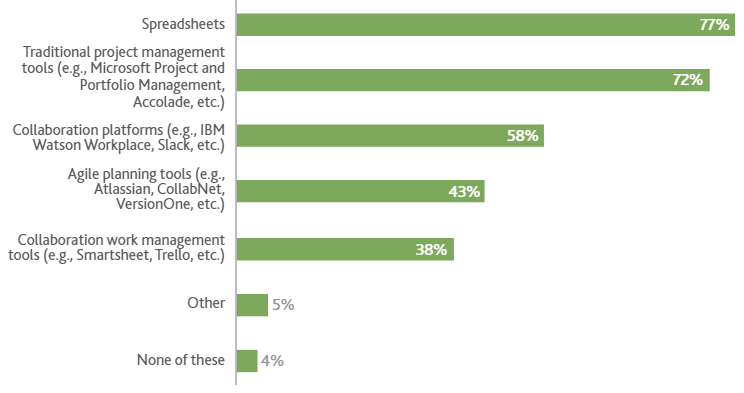
Exhibit 1.10: Tools project leaders use to deliver disruptive technology initiatives
PMI
In addition to these tools and technologies, project leaders are also relying heavily on technologies that enable effective cross-team communication. Traditional tools, such as email, are cumbersome when it comes to collaboration, as they arenot designed for real-time dialogue. Important information is easily buried within endless email chains, and constant email overload negatively affectsproductivity. On the other hand, collaborative work management softwareallows team members and co-workers across departments to engage, connect, and interact in real-time, significantly cutting down on email clutter and saving loads of time in the process. But more than just increasing the efficiency of intra-work communication, these technologies are improving its effectiveness as well. When team members are freed from filtering through hundreds of emails a day just to keep up with a project’s status, theyare able to spend more time talking about project strategy — which is precisely where the bulk of your team’s conversation needs to be focused.
Along with facilitating more efficient, strategy-focused communication, modern work management technologies are making it easier for teams to truly collaborate. With the right platform in place, executives, project leaders, and team members can add comments, assign tasks, organize dashboards, approve assets, and handle just about everything else related to the project all in one convenient solution. This deep level of collaboration inevitably leads to a greater sense of shared ownership from teammates and helps foster a cooperative, synergistic environment. Workers who feel they are part of a collaborative effort have been shown to have greater engagement, lower fatigue, and higher success rates than those who are isolated from peers.
As digital transformation automates workflows and coordinates traditional project management tasks like scheduling, Project leaders are getting more time to focus on strategy optimization and project delivery. In fact, the PMI predicts that as digital transformation continues to touch companies across every industry and vertical, Project Leaders will be viewed more as strategic leaders in their organizations: With more digital tools and automated processes at their disposal, Project leaders are homing in on the best ways to align each project with the business’ strategies and goals — and delivering more successful outcomes in the process.
Digital transformation is providing project leaders with the analytical technology to make data-driven decisions, break down patterns and trends, and ultimately enhance project outcomes and success rates. This access to deep data also assists executives and managers in making better-informed decisions faster and easier than ever before. Robust analytic reports help managers keep projects on track and on budget with real-time cost and labour analyses. In-depth data sets can also be easily broken down for stakeholders and executives, giving them precise insight into business impact and return on investment (ROI) on every project and helping them strategically plan future initiatives.
As technology continues to advance at exponential rates, organizations must adapt to the digital landscape or risk getting left behind. Companies that have implemented a digital transformation strategy have been shown to increase performance and revenues. A project leader who is mandated to deliver projects for organizations carrying out digital transformation would need to focus on streamlining communication, improving collaboration, and shifting focus from project processes status to strategy and outcomes.6
Future Scenario – Industry 4.0
In a sense, the Digital Age is spilling over and building up into the early stages of what is termed as the “Fourth Industrial Revolution” or “Industry 4.0.” We are on the cusp of another technological revolution – one that will fundamentally alter the way we live, work, and relate to one another. In its scale, scope, and complexity, the transformation will be unlike anything humankind has experienced before and we do not yet know just how it will unfold. The First Industrial Revolution used water and steam power to mechanize production. The Second used electric power to create mass production. The Third used electronics, information technology, and digitalization to automate production. Now, a Fourth Industrial Revolution is building on the Third and is characterized by a fusion of technologies that are blurring the lines between the physical, digital, and biological spheres.
There are three reasons why today’s transformations represent not merely a prolongation of the Third Industrial Revolution, but rather the arrival of a Fourth and distinct one: velocity, scope, and systems impact. The speed of current breakthroughs has no historical precedent. When compared with previous industrial revolutions, the Fourth is evolving at an exponential rather than a linear pace. Moreover, it is disrupting almost every industry in every country. The possibilities of billions of people connected by mobile devices, with unprecedented processing power, storage capacity, and access to knowledge, are unlimited. And these possibilities will be multiplied by emerging technology breakthroughs in fields such as artificial intelligence, robotics, the Internet of Things, autonomous vehicles, 3-D printing, nanotechnology, biotechnology, materials science, energy storage, and quantum computing.
References
1 Project Management Institute. (n.d.) What is Project Management? https://www.pmi.org/about/learn-about-pmi/what-is-project-management
2 Project Management Institute. (2020). Ahead of the curve: Forging a future-focused culture. www.pmi.org/learning/thought-leadership/pulse/pulse-of-the-profession-2020
3Woods, Juanita M., Marshall, Scott R. and Schlesiger, Louisa. (2023). Delivering Value with Project Management. University of North Georgia Press. Retrieved March 6, 2024, from https://ung.edu/university-press/books/delivering-value-with-project-management.php
4Newman, D. (2017, July 18). Top 6 digital transformation trends in education. Forbes. www.forbes.com/sites/danielnewman/2017/07/18/top-6-digital-transformation-trends-in-education/
5Project Management Institute. (2018). Developing digital-age project management skills: The project manager of the future. www.pmi.org/-/media/pmi/documents/public/pdf/learning/thought-leadership/pulse/digital-pm-skills.pdf?sc_lang_temp=en
6 McAbee, J. (2019, October 9). 4 ways digital transformation is changing project management. Wrike. www.wrike.com/blog/digital-transformation-changing-project-management

